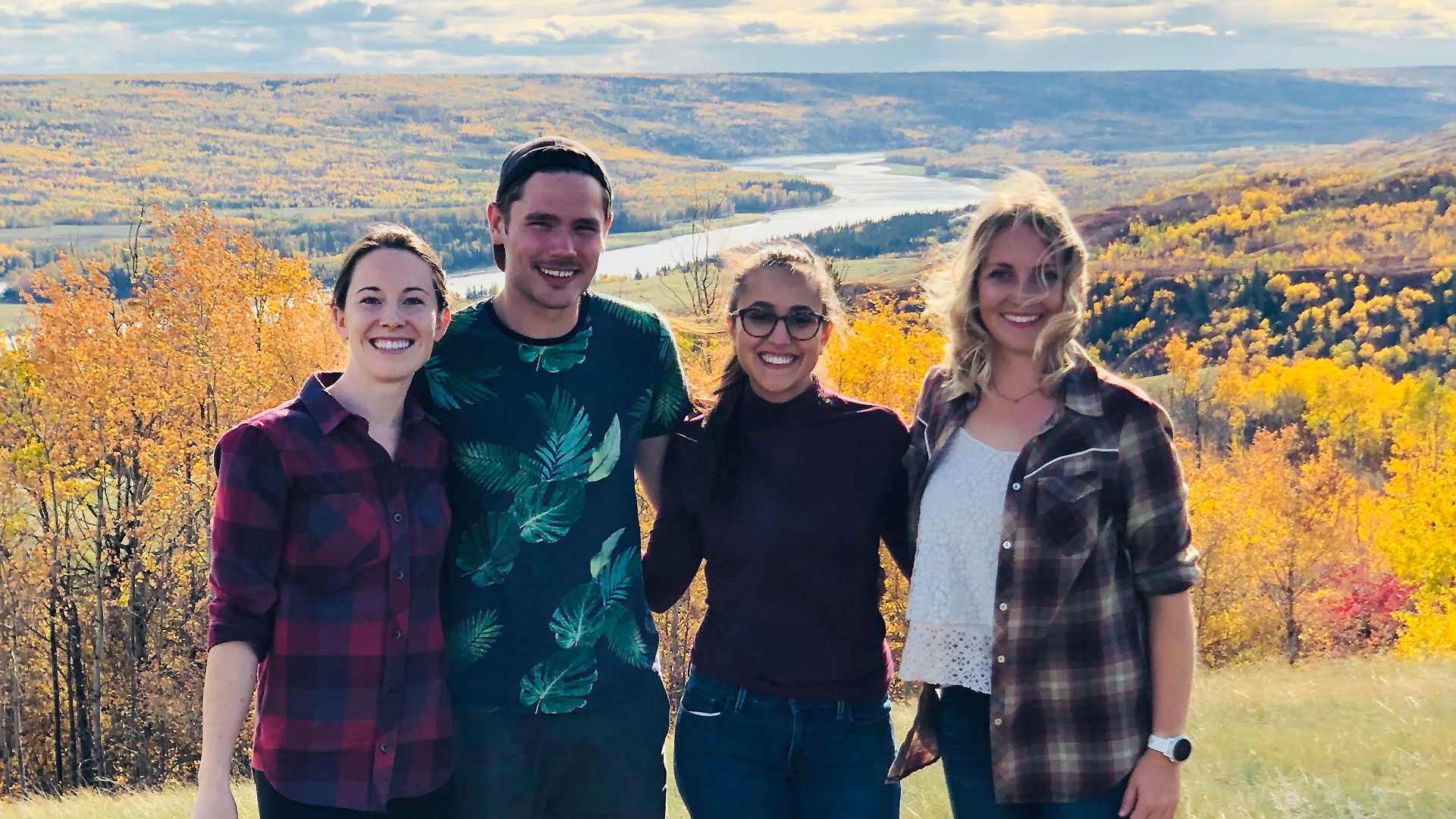Empowering our future leaders in rural and regional health care
Sasha Roeder Mah - 28 March 2022

From left, Jinny Donovan, Jason Ching, Manisha Baradia and Julie Saby, second-year students taking part in the PNME Program in Peace River in 2019
This is the first in a two-part series exploring how the FoMD is responding to the province’s need for rural and remote health practitioners
Ponoka family physician Greg Sawisky grew up in Kelowna, B.C., before heading to the University of Alberta for medical school. After a couple of shadowing opportunities in Fort McKay and Stettler, he threw himself into the Faculty of Medicine & Dentistry’s Rural Integrated Community Clerkship (ICC) program and has never looked back.
“There is something so wonderfully powerful about being a physician involved in true cradle-to-grave medicine,” says Sawisky about being a rural practitioner. “I get a chance to participate in the entire human experience, from birth to death to everything in between, sometimes all during the same shift.” Sawisky, who has been a preceptor and is currently the ICC coordinator for learners in Ponoka, adds that for him, small-town living is also about the lifestyle. “Virtually no commute time means going home for lunch, not spending time stuck in a car and having more time with my family,” he says.
Meeting the needs of rural and remote communities
Having lived his whole life in a Canadian urban centre, Sawisky is somewhat of an anomaly when it comes to health professionals in Alberta’s rural and remote areas. According to Mark Prins, director of the Office of Rural and Regional Health, many rural physicians grew up in smaller communities and always imagined their careers in those settings. Some are relative newcomers to Canada who take up rural practice for various reasons; others were drawn to rural practice during their training, inspired by a preceptor or by seeing a need to which they felt compelled to respond.
The need is great, and there are many holes to be filled. “While our cities are growing, Canada is a huge country and people will continue to live in rural communities,” says Sawisky. “Those people need medical care, and rural medicine is needed to help address that need.” In response, the faculty has sharpened its focus on that area in recent years, says vice-dean of education Shirley Schipper.
“It’s right in our mission statement,” says Schipper. “‘We are for the North. Our mandate is to Northern Alberta and beyond,’” clearly indicating the prioritizing of remote communities, where, continues Schipper, “there is great inequity and disparity in health-care services, delivery and outcome.” In fact, she says, the faculty’s strategic plan, Vision 2025, centres rural and remote health across all of its focus areas, from teaching and learning to the research, innovation and partnerships being invested in. “We also have a rural council, advisory to the dean, which is made up of rural doctors from across Alberta,” she says. “The dean meets with those members regularly to discuss recruitment, support, programs and ideas for sustainability and growth.” Faculty representatives also meet regularly with Alberta Health Services and Calgary’s Cumming School of Medicine leadership to discuss ways to better meet the health needs of rural Alberta.
Building relationships
As rural and regional health director since last September, Prins is hard at work putting all those discussions and strategic plans into action. A family physician who spent years in Inuvik, a town of 3,000, about 1,000 kilometres north of Yellowknife—and who grew up on a farm in central Alberta—Prins says the opportunities presented to medical learners need to accurately reflect societal priorities. And here in Alberta, that means “getting our students out of the city.” Sawisky agrees. “The best way for medical schools to recruit rural generalists is to enable medical students opportunities to work and live in rural environments during their foundational medical education to truly see what rural general medicine can offer,” he says. But before that can happen, strong and enduring partnerships must be built with the communities where those students will eventually end up.
Members of Prins’ team regularly make the trek from Edmonton to remote communities and meet with family doctors there, taking time to build the relationships that will allow for learner support. “You have to identify community champions, physicians who understand what it means to educate, they have to feel supported,” says Prins. “It can take years of relationship building before a community feels ready to take a student.” Without that foundation, none of the teaching initiatives within the faculty will take hold, says Prins, which is why he hopes to grow his team in the coming months so more time can be dedicated to cultivating those relationships with rural and remote areas.
Coming up Monday, April 4: Part 2: The FoMD’s multilayered approach to growing the pool of rural and remote doctors in Alberta, and a bold vision for the future